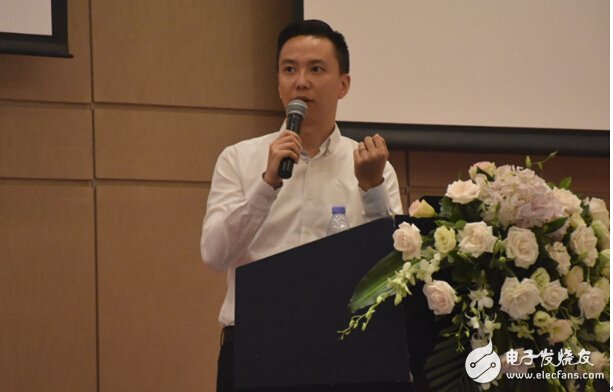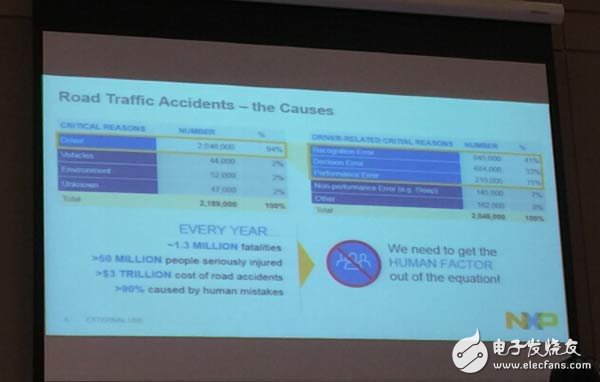On June 30th, at the conference center on the third floor of Kexing Science Park in Nanshan District, Shenzhen, more than 200 auto industry and electronics industry colleagues from all over the country participated in the “Smart Vehicle Technology and Application Summit†jointly sponsored by e-fans and China Power Port. Forum, for the future trend of ADAS and driverless, Huasheng, business development manager of NXP Automotive Electronics Division, gave a wonderful speech.
The millimeter wave radar will be the main vehicle sensor in the future. The millimeter wave frequency division indicates the development direction. The developed countries in the world will switch to the 77GHz upgrade. The 24GHz products still have a market in the short term in China. In response to the demand difference between domestic and foreign markets, Huasheng Manager gave a detailed analysis.

Figure 1: Huasheng, Business Development Manager, NXP Automotive Electronics Division
ADAS market potential, large millimeter wave radar will become mainstream in the future
Hua Shengyi, business development manager of NXP Automotive Electronics Division, pointed out that 90% of the innovation in the automotive industry comes from innovation in the electronics industry. Innovation in the electronics industry comes from three aspects: how to make the car intelligent, and enjoy the enjoyment of consumer electronics in the car? How to achieve safe unmanned driving (ADAS)? How to make cars achieve energy saving and emission reduction? These three directions drive innovation in the electronics industry.
Due to the increasing safety standards of automobiles, the level of automotive electronics, and the growing demand for driving safety, the ADAS system with active safety technology has shown a rapid development trend in recent years. According to US market research firm strategy analysis company data, the automotive electrical components market is expected to grow rapidly from $239 billion in 2015 to $303.3 billion in 2020.
Hua Sheng’s manager analyzed the dilemma of global car safety driving. There are more than 1.3 million road casualties every year, 94% of which are generated by drivers. 41% of them are accidents that the driver can't see or see, and 33% are decisive. The brakes are not braked. No turning, 30% is due to the driver's operational skills, such as slow response, novice. In global statistics, China’s mortality rate is the highest. How to reduce the rate of driving injuries in China? What can we do to reduce road injuries or death?

According to the Korea Industrial Technology Evaluation and Management Institute (KEIT) and the US Department of Transportation, the self-driving car technology can be divided into four stages: the first stage is to maintain the car spacing, keep the lane and other simple automated auxiliary facilities; the second stage is to achieve The integration and coordination of this technology; the third stage is to enable the vehicle to identify traffic signals and road traffic, to achieve partial auto-driving; the fourth stage is to enable the vehicle to automatically travel from the starting point to the destination through management and control equipment. No manpower is required in the middle.
Manager Hua Sheng pointed out that in the four stages of autonomous vehicle technology evolution, the number of sensors required for a car is very alarming. According to IHS Research, a market research organization, with the wide application of the ADAS system, the average annual growth rate of the automotive radar sensor market will be as high as 23% in the next few years. It is estimated that the total market demand will reach 50 million by 2021.
At the same time, Hua Sheng Manager believes that the microwave processor, millimeter wave radar, laser radar, and laser technology video processor, as well as the "car to the outside" information exchange as the main function of V2X technology must pay attention to, the third automatic driving At the stage, V2X technology is a must, and at this stage microwave radar has been replaced by millimeter wave radar.
The core of ADAS hardware is the sensor (camera, radar) and processor, while the software core is the algorithm. Hua Sheng manager believes that the future millimeter wave radar is the mainstream, CACR is 20%, the total demand is 50 million, and each car needs an average of 5-6 radars, and the market capacity is huge. In the questioning session, Huasheng Manager further stated that the 77G millimeter wave radar is definitely the mainstream in the future. NXP and Freescale are the mainstream 77G RF suppliers in the world, covering short, medium and long distances. Google's first-generation experimental driverless car uses laser radar, and the second generation will work with NXP to use millimeter-wave radar. Currently there are 77G RF suppliers in Jiangsu and Anhui, but the quality is yet to be verified.
Hm Series Connector,Heavy Duty Connector Modular,Industrial Power Connect Modular,25Pins 5A Connector
Kunshan SVL Electric Co.,Ltd , https://www.svlelectric.com